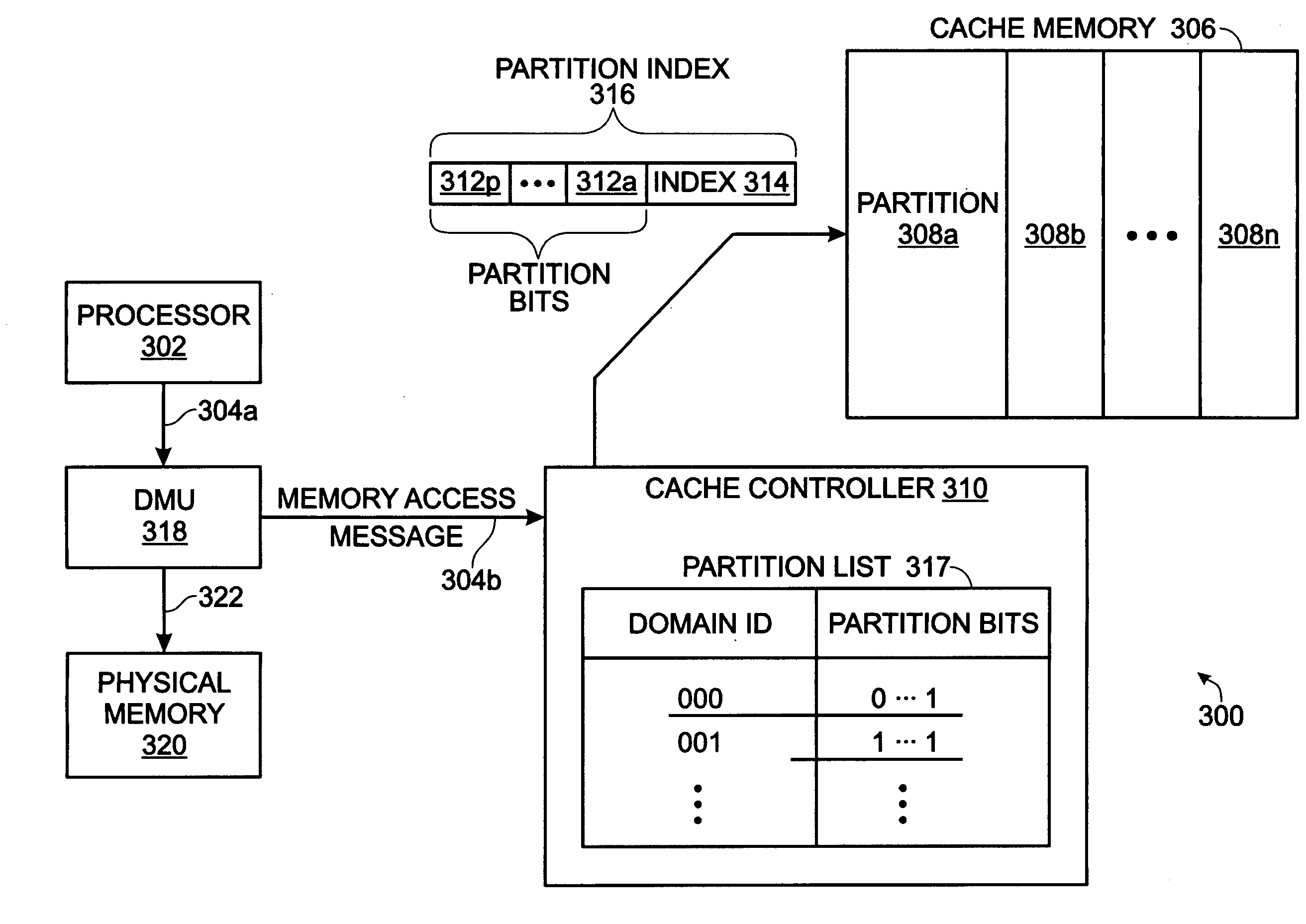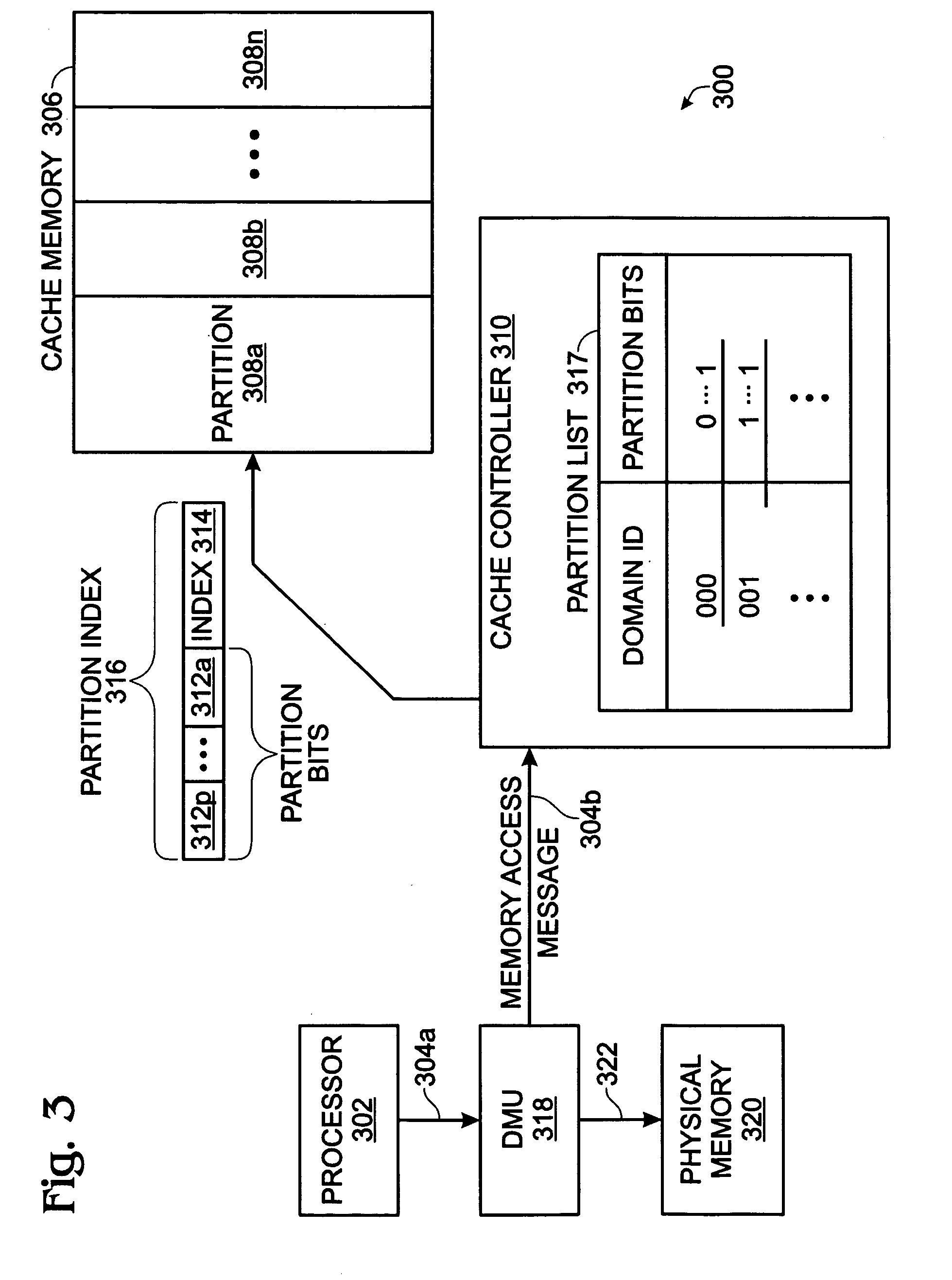Multi-Domain Management of a Cache in a Processor System
a processor system and cache technology, applied in the direction of memory address formation, micro-instruction address formation, memory address/allocation/relocation, etc., can solve the problems of computer crash, physical address cannot be used in the program, program to corrupt the working set of another program,
- Summary
- Abstract
- Description
- Claims
- Application Information
AI Technical Summary
Benefits of technology
Problems solved by technology
Method used
Image
Examples
Embodiment Construction
[0040]FIG. 3 is a schematic block diagram of a computer system for managing a cache memory. The system 300 comprises a processor 302 having an address interface on line 304 for sending a memory access message including an address in physical memory and a domain identification (ID). For example, processor 302 may be a general purpose computer processing unit (CPU) or a data management application (DMA) engine. The CPU and the DMA engine have completely different memory management models. As another example, the processor may be an ARM processor and a PowerPC processor. There are a number of other processing devices existing that are well known by those with skill in the art, and the system 300 is not limited to any particular type of processor, microprocessor, or computing device. As used herein, a heterogeneous multi-processor system uses different types of processors—having different functionality and programming models. That is, heterogeneous processors use different algorithms to...
PUM
 Login to View More
Login to View More Abstract
Description
Claims
Application Information
 Login to View More
Login to View More - R&D
- Intellectual Property
- Life Sciences
- Materials
- Tech Scout
- Unparalleled Data Quality
- Higher Quality Content
- 60% Fewer Hallucinations
Browse by: Latest US Patents, China's latest patents, Technical Efficacy Thesaurus, Application Domain, Technology Topic, Popular Technical Reports.
© 2025 PatSnap. All rights reserved.Legal|Privacy policy|Modern Slavery Act Transparency Statement|Sitemap|About US| Contact US: help@patsnap.com



